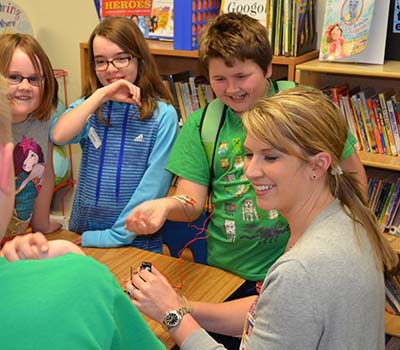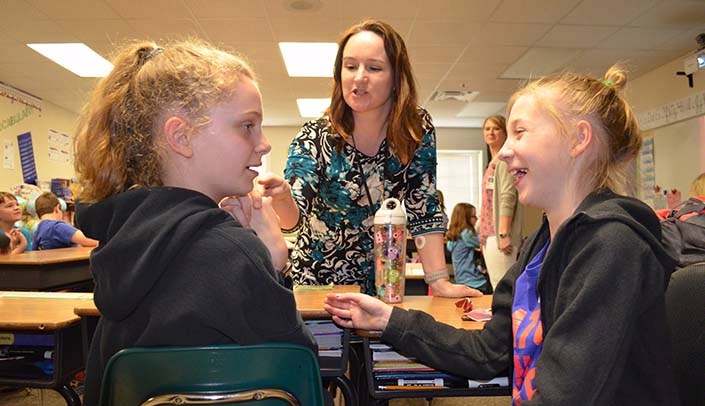By the time Jacy Vermaas got around to calling for volunteers, every hand went up. Voluntarily.
 |
Rashelle Hoffman, right, and students get a laugh out of using the human-human interface device. |
The two MMI representatives spoke about physical therapy and occupational therapy and how having those clinical backgrounds ties into their research in the lab.
The presentation was only the second for Vermaas and Hoffman.
“We’re going to be showing them how the brain activates muscles in their body,” Hoffman said.
“Part of coming to things like this is to try to create interest so that kids want to study these areas,” Vermass said.
The duo brought a human-human interface device that could detect the brain’s control of the muscles from one person’s muscle and then send an electrical signal activating the ulnar nerve in the arm causing a contraction of the muscle in another person’s hand — which proved a big hit with the children.
Children took turns being the “controller” and the “controlled,” with one boy waving his arm frantically while his partner, fingers twitching involuntarily, laughingly complained.
Student Caleb Sherman said that the experiment felt “weird,” especially when his muscles were being moved by his friend.
“I can’t really explain it, but it’s fun,” he said.
One of the objectives for the Kurz lab is to have an ongoing community engagement piece, Vermaas said, and the presentation for the rapt students was an example.
“Dr. Kurz is wanting to grow programs like this and push them out into the community as part of the lab’s mission,” she said.
